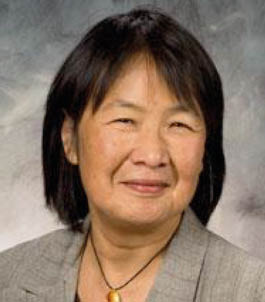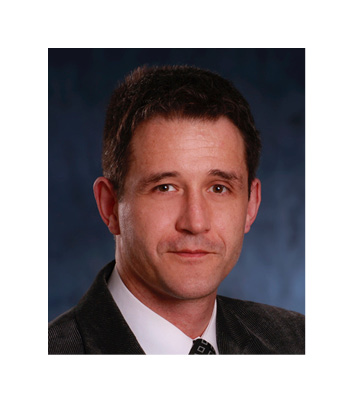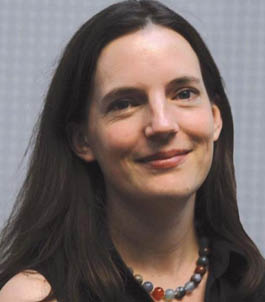Javascript is disabled
Javascript seems to be disabled. This will break some core site features. Please enable javascript or revisit this site from another device.
Meet the global experts!
Each congress day a diverse mix of plenary lectures will be given by the following leaders in their field who will set the tone for IVC-21.
Hiroshi Amano
Hiroshi Amano received his BE, ME and DE degree in 1983, 1985 and 1989, respectively, from Nagoya University. From 1988 to 1992, he was a research associate at Nagoya University. In 1992, he moved to Meijo University, where he was an assistant professor, associate professor from 1998 till 2002, and professor from 2002 till 2010. He moved to Nagoya University, where he was a professor of Graduate School of Engineering from 2011 till 2015. On Oct. 1, 2015, he became a director of Center for Integrated Research of Future Electronics, Institute of Materials and Systems for Sustainability, Nagoya University. During his doctoral program at the Nagoya University Graduate School of Engineering, he was able to realize high-quality epitaxially grown GaN film with metal-organic vapor phase epitaxy (MOVPE), p-type GaN filmdoped with Mg while conducting research with Professor Akasaki. For the first time in history, he established the technology necessary for the production of blue LEDs, thus performing a great achievement the development of the high-luminosity blue LED.
He is currently developing technologies for the fabrication of high-efficiency power semiconductor development and new energy-saving devices at Nagoya University. He has over 552 publications, and 32 patents. Prof. Amano shared the Nobel Prize in Physics 2014 with Prof. Isamu Akasaki and Prof. Shuji Nakamura "for the invention of efficient blue light-emitting diodes which has enabled bright and energy-saving white light sources"

Barry Barish
Barry C. Barish was awarded the 2017 Nobel Prize in Physics for his work on the Laser Interferometer Gravitational-Wave Observatory (LIGO) and the first direct detection of gravity waves. He shared the prize with American physicists Rainer Weiss and Kip S. Thorne. Barish began his career in high-energy physics. He worked on experiments at the Stanford Linear Accelerator Center, and in the 1980s he became involved in the search for magnetic monopoles.
In 1997 he established the LIGO Scientific Collaboration (LSC), a team of hundreds of scientists from around the world. That same year Barish became LIGO director. Advanced LIGO was approved by the NSF in 2004, and it was completely installed in 2014. On September 14, 2015, Advanced LIGO made the first detection of gravitational waves from a pair of black holes that spiraled into each other 1.3 billion light-years away.

Robert Feidenhansl
Prof. Robert Feidenhans’l has been appointed as the new Chairman of the Management Board of the European XFEL GmbH. He studied at Aarhus University and holds a Ph.D. in surface physics. Starting in 1983, he worked at the Risø National Laboratory in different scientific and leading positions, until joining the Niels Bohr Institute in 2005. As a researcher, he is an expert in new groundbreaking X-ray technologies and research at large-scale X-ray synchrotron research facilities, such as ESRF in France, PSI in Switzerland, and DESY in Hamburg. The focus of his research has been to study the properties of surfaces and nano systems by means of X-ray scattering also with a focus on understanding structure and properties. This includes participating in the development of new imaging modalities with applications towards energy materials and also for application in food science like phase contrast and dark field methods and new methods for achieving high spatial resolution. He had also been active in the time resolved X-ray scattering experiments from nanoseconds to femtoseconds.

Evelyn Hu
Evelyn Hu is the Tarr-Coyne Professor of Applied Physics and Electrical Engineering at the John A. Paulson School of Engineering and Applied Sciences at Harvard. Prior to Harvard, she was a faculty member at UCSB, in the Departments of Materials, and of Electrical and Computer Engineering. While at UCSB, she also served as the founding Scientific co-Director of the California NanoSystems Institute, a joint initiative between UCSB and UCLA. Before joining UCSB, she worked at Bell Labs in both Holmdel and Murray Hill. She is a member of the National Academy of Sciences, the National Academy of Engineering, the American Academy of Arts and Sciences, and the Academica Sinica of Taiwan. She is a recipient of an NSF Distinguished Teaching Fellow award, an AAAS Lifetime Mentor Award, and holds honorary Doctorates from the University of Glasgow, Heriot-Watt University, Hong Kong University of Science and Technology, and the University of Notre Dame.

Tom Kammermeier
Tom Kammermeier leads the Global Application Development Team for Industrial Vacuum within the Leybold GmbH, a member of the Swedish Atlas Copco group. Constantly challenged by new customer requests, his team is developing new technical solutions extending the range of operation for vacuum technology. In view of the enormous potential of Hyperloop, a high-speed, vacuum based, ground transportation system for which the company became a key technology partner, he closely accompanies Hyperloop activities all over the world for many years.
Tom Kammermeier studied physics at the Rheinisch-Westfälische Technische Hochschule Aachen (RWTH). His diploma thesis (2001) focuses on optical investigation of ultra-short time dynamics of exchange bias magnetism. In 2005 he joined a European Union funded research project on dilute magnetic semiconductors. His PhD work deals with structural and magnetic properties of GaN and ZnO thin films doped with Gadolinium and Cobalt, respectively. Among other experimental methods, X-ray spectroscopy, electron spin resonance and squid magnetometry were main focus. From 2010 to 2012 he gained insight into environmental research. He has sound background on aerosol mass spectroscopy resulting from his work about particular matter and source appointment.
Since 2012 he works for Leybold as specialist for application development – ranging from Li-battery production, plastic recycling, vacuum cooling, heat treatment, display technology etc. and - of course - Hyperloop.

Molly M. Stevens
Molly M. Stevens is currently Professor of Biomedical Materials and Regenerative Medicine & Research Director for Biomedical Material Sciences in the Department of Materials, Department of Bioengineering and the Institute of Biomedical Engineering at Imperial College London. She received her PhD from The University of Nottingham in 2000, working within the School of Pharmaceutical Sciences. She conducted her postdoctoral research within the Department of Chemical Engineering at MIT in the labs of Prof Robert Langer, where she co-developed innovative techniques for the regenerative of bone and other tissues. She joined Imperial College in 2004 and was promoted as Professor in 2008. Research in the Stevens Programme focusses on designing and developing innovative bio-inspired materials for applications in regenerative medicine, tissue engineering and biosensing.
Molly Stevens’ research has been recognised by over 20 major awards, such as the 2016 Clemson Award for Basic Research from the Society for Biomaterials, the EU40 Prize for best material scientist under the age of 40, a listing in The Times as one of the top 10 scientists under 40 and the European Life Sciences 2014 Research Group of the Year Award, amongst many others. She was recently elected to the Fellowship of the Royal Academy for Engineering and delivered the Clifford Paterson Lecture for the Royal Society in 2012. She has previously served on the Board of Reviewing Editor for Science and is Associate Editor of ACS Nano. More information on the Stevens Group can be found at www.stevensgroup.org.
